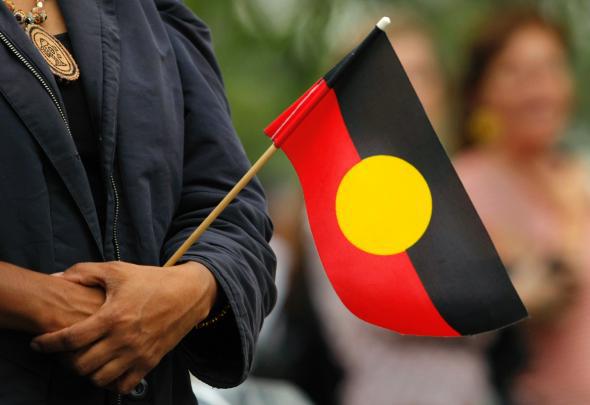Emoji flags are one medium through which Twitter users signal a sense of inclusion, whether by supporting a national sports team, displaying some garden-variety patriotism, or engaging in presidential jingoism. But what if you don’t have an emoji flag to call your own?
For ethnic groups marginalized by long histories of colonization, the lack of a digital flag icon is one more symbol of invisibility—something Twitter recognized Thursday when it unveiled an emoji that features both the Aboriginal and Torres Strait Islander flags to coincide with the 50th anniversary of Australia’s National Sorry Day, which annually memorializes the mistreatment and oppression of the country’s indigenous population.
Here’s what the new emoji looks like in action:
“This emoji is a global first for Twitter,” wrote Kara Hinesley, Twitter’s head of public policy for Australia and New Zealand, in a blog post on the company’s site Thursday. “To date, there has been a gap in emojis representing Australia’s Indigenous communities and cultures.” As Mashable noted, the new emoji isn’t available through the social media site’s permanent bank of banners. But Hinesley’s blog post lists a variety of hashtags that will trigger it, including #1967Referendum, #RightWrongs, and #Reconciliation2017. The icon’s release is also tied to the beginning of the Australian Football League’s indigenous round, an annual celebration of indigenous players. It’s the latest entry in a parade of viral emoji-branded hashtags, which kicked off in 2014 with so-called “hashflags” at the FIFA World Cup in Rio de Janiero and has since featured custom icons sponsored by brands like Coca-Cola as well as commemorated events like last summer’s Republican and Democratic national conventions and January’s presidential inauguration.
“The emoji showing both flags together amounts to a small (very small) action, but for the group of people it stands for, the digital recognition carries deep significance,” Tacey Rychter, an audience growth editor in the New York Times’ Australia bureau, noted on Friday. As Luke Pearson, an Australian Broadcasting Corporation digital producer for the indigenous radio unit who is also an indigenous Australian, told the Times, “Emojis are huge. We use them all day, every day, on so many different platforms. They aren’t entirely insignificant, because they’ve become such a core part of our communications.”
There has long been a campaign afoot to render the flags in emoji form. As Gizmodo reported Friday, the lack of an emoji representing the Aboriginal flag on Unicode prompted some users to employ [-0-] as a crude substitute. A year-old Change.org petition, now closed, appealed to Shigetaka Kurita, the Japanese engineer who designed the first emojis in 1999, to emojify both flags. Google also wanted to feature the Aboriginal standard on its site in 2010, the Times reported. But Harold Thomas, an indigenous activist who designed the flag in 1971 and still holds intellectual property rights to it, refused. Only after months of negotiation with Twitter did he agree to allow a digital rendering for use in the hashtag.
The emoji’s release also coincides with a trip by hundreds of Aboriginal leaders to Uluru, formerly called Ayer’s Rock, to demand that the Australian government constitutionally recognize them. A 1967 referendum—the anniversary the bluntly named National Sorry Day commemorates—removed all references to Aboriginal peoples, who are legally defined as a biological race, from the national constitution. Despite numerous attempts, no formal treaties or other forms of sovereignty were ever promulgated between the Australian government and the Aboriginal pwoplw or Torres Strait Islanders, another indigenous group. As the Australian Broadcasting Corporation noted in 2014, the challenge for indigenous Australians—and the No. 1 argument within the community against pushing for sovereignty via treaty—is securing support from the wider national population. By bolstering indigenous peoples’ public visibility, the flag emoji may be an asset in that fight. Twitter’s new icon “means this corporate giant is taking notice of a small population of people, and also acknowledging that these people have something to say,” Dr. Bronwyn Carlson, an indigenous associate professor at the University of Wollongong, told the Times.
Over the past year, Twitter has pioneered several hashtag initiatives to front indigenous Australians’ visibility, including #IndigenousDads, #IndigenousMums, and #ChangeTheDate, an effort to alter the annual Australia Day holiday that commemorates the 1788 arrival of British colonizers to the island. And although such innovations inevitably spur debate over whether such campaigns truly bolster indigenous causes or merely burnish Twitter’s corporate reputation, the benefits may flow both ways. As Dr. Carlson told the Times, “With Twitter, we have our own space, where we can continually raise our own stories and particularly talk about things that are important to us.”
